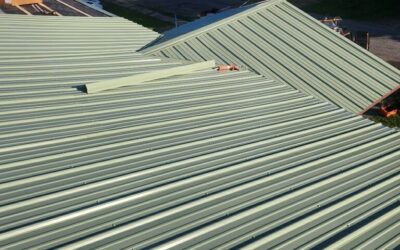Building a Hip Roof Without Ceiling Joists: Complete Guide
Removing ceiling joists allows you to create vaulted or cathedral ceilings under a hip roof. This transformative design offers open interiors, modern aesthetics, and design flexibility—but it also involves significant structural and insulation considerations.
In this full-length guide, we cover:
- What it means to remove ceiling joists under a hip roof
- Benefits of open, vaulted ceilings under hip roof structures
- Structural requirements and engineering considerations
- Framing techniques for hip roofs without ceiling joists
- Design variations and architectural impact
- Insulation, air sealing & ventilation solutions
- Challenges and caveats to be ready for
- Cost comparisons and ROI analysis
- Contractor tips and building permits
- FAQs and final recommendations
1. What Does It Mean to Remove Ceiling Joists?
Ceiling joists are horizontal framing members that run across the width of a home, typically connecting wall plates and supporting ceiling drywall. In standard hip-roof construction, these joists also act as tension ties, resisting outward thrust forces from rafters.
Removing them changes the roof structure entirely:
- Open interior spaces become possible—vaulted or cathedral ceilings emerge.
- Tension support must come from alternative structural systems, such as ridge beams, ridge boards, or collar ties.
- Design shifts from attic space toward living volume.
2. Benefits of Hip Roof Vaulting
2.1 Spacious, Airy Interiors
Eliminating joists opens up to the roof, creating volume and visual interest.
2.2 Natural Light Opportunities
Skylights, clerestory windows, and exposed rafters invite light into upper reaches.
2.3 Modern Aesthetic
Vaulted hip roofs create a contemporary feel with elegant angles and timber exposure.
2.4 Enhanced Circulation
With increased volume, ventilation systems like ceiling fans work more efficiently.
2.5 Market Value Boost
Vaulted spaces are popular among buyers, adding architectural flair and broad appeal.
3. Structural Requirements & Engineering Essentials
Removing ceiling joists requires careful structural solutions:
3.1 Ridge Beams vs Ridge Boards
- Ridge boards only align rafters—they don’t carry load.
- Ridge beams, however, support roof weight with posts or beams transferring loads to bearing walls.
3.2 Collar Ties or Rafter Ties
These horizontal connections restrain rafter thrust. Installed high in the attic, they maintain roof integrity even without joists.
3.3 Hip and Valley Rafter Support
Hip rafters need strong endpoint support—either bearing walls or engineered glulam beams.
3.4 Engineering Calculations
Expect structural analysis: snow load, wind uplift, deflection limits, beam sizing, etc.
3.5 Lateral Support and Bracing
Without joists, lateral bracing becomes even more critical.
4. Framing Techniques for Hip Roofs Without Joists
4.1 Using Glulam Ridge Beams
Glued-laminated timber spans longer distances, supporting vaulting.
4.2 Installing Collar/Rafter Ties
High installations (~3 ft below ridge) act as a tension tie system.
4.3 Hip Rafter & Valley Integrity
Ensure hips land on solid support—posts, beams, or engineered headers.
4.4 Load-Bearing Walls & Support Posts
Interior posts and walls become part of the structural system under vaulted spans.
4.5 Exposed Structure vs. Concealed Framing
Decide if rafters will remain exposed for aesthetic effect or be covered with drywall.
5. Design Variations & Architectural Impact
5.1 Vaulted Hip Ceilings
Uniform pitch ceilings, open from all sides downward.
5.2 Hybrid Vaulted/Cathedral Combinations
Vaulted central area with dropped ceiling or flat sections along edges.
5.3 Exposed Beam Accents
Aesthetically, exposed collar ties or paired rafters add charm and interest.
5.4 Vaulted Dormers
Projection dormers with vaulted interiors add volume and light without compromising structure.
5.5 Symmetry vs. Asymmetry
Symmetrical hips are easier to engineer, but custom asymmetry is possible with proper framing.
6. Insulation, Air Sealing & Ventilation Strategies
6.1 Conditioning the Entire Roof
Without attic space, insulation is open to living space and must follow R-value and airtightness standards.
6.2 Insulation Methods
- Spray foam adheres directly to roof deck—seals and insulates.
- Rigid insulation can be layered under roof deck or between rafters.
- A vent-free approach is often necessary since soffit and ridge vents are impractical without joists.
6.3 Air Sealing
Seams at ridge beam, rafters, and wall plates must be sealed to prevent air leakage and moisture intrusion.
6.4 HVAC Considerations
Conditioned vaulted spaces require careful HVAC design—ducting must be fully inside conditioned space.
7. Challenges & Caveats
7.1 Ceiling Acoustics
Vaulted spaces can echo—acoustic treatment may be necessary.
7.2 Cost and Complexity
Vaulted roofs require more materials, labor, and engineering—costs can rise 20–50%.
7.3 Structural Rigor
Engineering must ensure deflection control to prevent long-term sagging or beam movement.
7.4 Finishing Challenges
Installing drywall vs. exposed rafters affects aesthetics and maintenance.
7.5 Code Requirements and Approvals
Meeting structural, insulation, fire-code, and residential regulations adds oversight.
8. Cost Comparison & Return on Investment
8.1 Materials and Labor
Expect:
- Larger ridge beams, engineering costs, interior finishes, insulation upgrades.
8.2 Value
Vaulted ceilings often increase appeal and resale value—potential payback over time.
8.3 Practical ROI
Balance upfront costs with long-term benefits like lighting quality, comfort, and structural uniqueness.
9. Working with Contractors & Obtaining Permits
9.1 Share Detailed Plans
Include structural engineering, insulation layout, and venting strategy.
9.2 Verify Builder Expertise
Not all framers have experience with vaulted hip roofs—you’ll need skilled carpenters.
9.3 Building Permit Requirements
Structural review is mandatory—expect inspections during framing, insulation, and final.
9.4 Cost Documentation
Ensure change orders reflect additional materials, beams, or engineering due to vaulted design.
10. FAQs About Hip Roofs Without Ceiling Joists
Q: Can any hip roof be vaulted?
A: Most can be provided beam support is added. Flat joist-span hip systems with ridge boards only usually require beam upgrades.
Q: Do vaulted ceilings reduce attic storage?
A: Yes—they eliminate common attic space. Storage requires a nearby closet or dead attic above halls.
Q: Will heating/cooling costs rise?
A: Possibly—though efficient insulation and HVAC design can maintain energy performance.
Q: Can skylights be added?
A: Absolutely—but coordinating installation with structural rafters and roof deck integrity is key.
Q: How high should collar ties be?
A: Typically several feet below the ridge; structural analysis ensures correct placement.
11. Conclusion: Is a Hip Roof Without Ceiling Joists Right for You?
Vaulting a hip roof by removing ceiling joists transforms the interior into elegant, vaulted open space—but it demands:
- Strong structural support
- Insulation and airtightness
- Skilled labor
- Higher cost
When engineered and built correctly, the result is a timeless architectural feature that elevates the space both aesthetically and functionally.
Would you like help turning this into formatted HTML for your blog, adding local references or project examples, or branding it with your company’s voice?
 (440) 307-2060
(440) 307-2060


